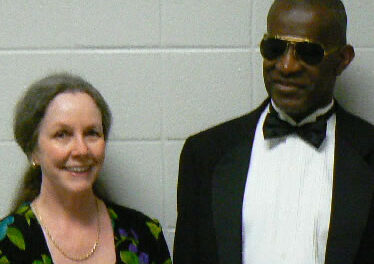Lovers of large-scale and rich orchestral works of the Romantic Period eagerly anticipated Music Director Grant Llewellyn’s enterprising scheduling of one of the two most popular symphonies of Anton Bruckner (1824-96), paired with a rarity by Franz Joseph Haydn (1732-1809), for this concert of the North Carolina Symphony.
The Sinfonia Concertante in B-Flat, Hob.I:105, for violin, cello, oboe, and bassoon, is an ideal piece to give principal orchestra players solo exposure. It was composed in 1792 for the London impresario Johann Peter Salomon. Music lovers will be forever in Salomon’s debt for making Haydn’s twelve “London” symphonies possible. The concertante is three movements, two fast sandwiching a slow one. It bubbles over with Haydn’s good humor and wit in which he exploits a constantly-shifting juxtaposition of soloists. The slow movement is basically chamber music with slight orchestral support. Llewellyn led a beautifully-balanced and stylish interpretation with ideal tempos. Assistant concertmaster Dovid Friedlander played with impeccable intonation and a warm tone. These qualities were equally present in principal cellist Bonnie Thron’s fine performance. Principal oboist Melanie Wilsden produced a focused and glowing sound, while principal bassoonist John Pederson conjured up his as-usual delightfully pungent sound. The interplay, pairings, and more, among and between these soloists and with the other orchestra players, were constant delights.
Bruckner began composing the Seventh Symphony in E in September 1881 and completed two years later. He was working on the Adagio when news of Richard Wagner’s death came to him. Musical Vienna was split between the conservatives, represented by Johannes Brahms and the music critic Eduard Hanslick, versus the New Music enthusiasts, led by Franz Liszt and Wagner. The premiere of the Seventh Symphony on December, 30, 1885, signaled that Bruckner had finally overcome conservative opposition.
Bruckner had started out playing the magnificent organ in the Abbey of St. Florian, and his treatment of the orchestra reflects the aural experience of sound in a vast space and on a large time scale. His works also reflect his deep Catholic faith, much as do the scores of Olivier Messiaen in the 20th-century.
The first two movements are on a vast architectural scale. The first has three themes that are treated in huge paragraphs. The magical opening theme is played by the cello section and solo horn above hushed string tremolos. The lyrical second theme is played by oboe and clarinet, supported by horns and trumpets. After a brass climax, the dance-like third theme is played by woodwinds and strings. The second movement, Adagio, a tribute to Wagner, features a chorale played by four Wagner tubas, brass instruments combining tonal elements of the French horn and the trombone. This is contrasted with lighter dance-like music suggestive of the Austrian Ländler. The third movement is a swirling, elephantine scherzo with a lyrical trio. The finale combines a dotted motive and a hymn-like theme that build up over several climaxes before ending in a brilliant apotheosis.
Meymandi Concert Hall is perfect for the vast and sprawling symphonies of Bruckner. Llewellyn controlled and paced the entire symphony superbly, using restrained gestures. The opening ppp was magical, and the huge massed brass climaxes were magnificent. Kudos to the entire brass section; the five French horns, four Wagner tubas, trumpets, and trombones seemed flawless as they played with tight ensemble, with no cracked notes or early entrances. The strings played with glorious, warm sound and precise intonation. This was a breathtaking and riveting performance.
The program will be repeated in the same venue on Saturday, November 23. For details, see the sidebar.












